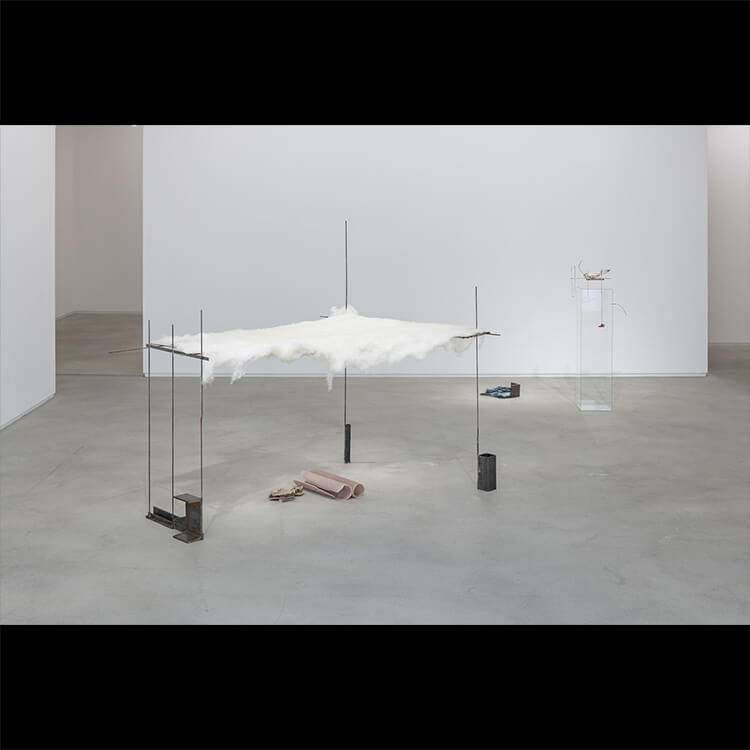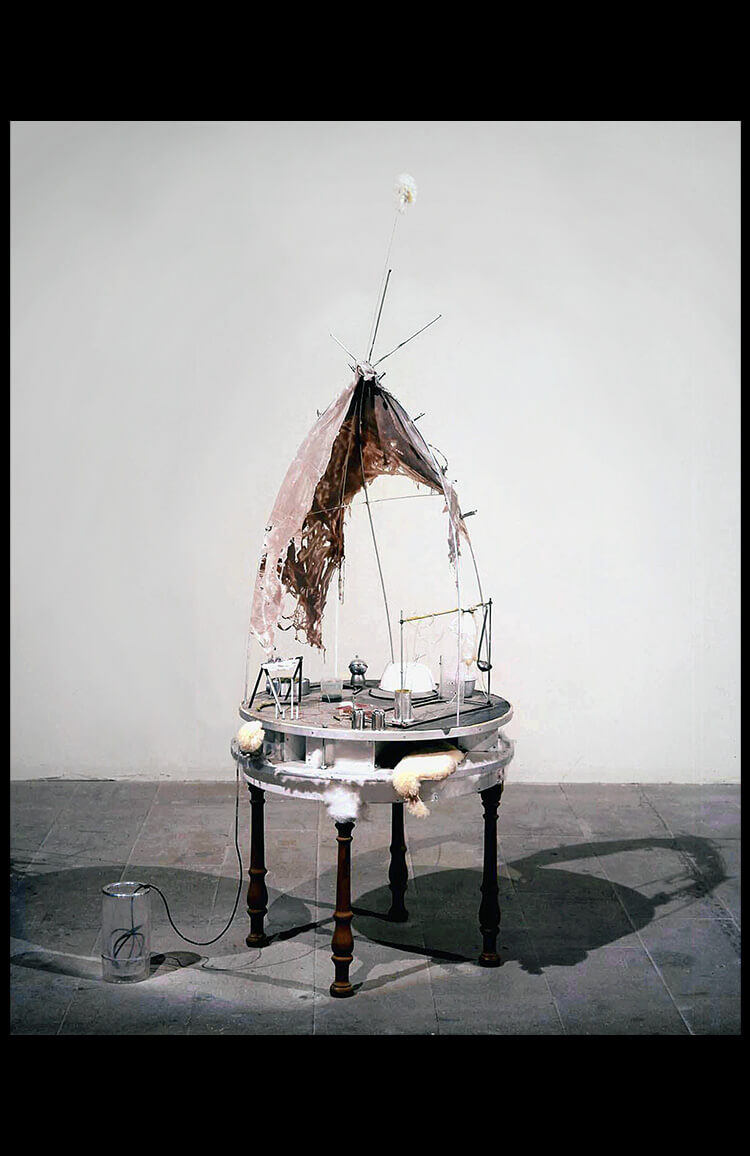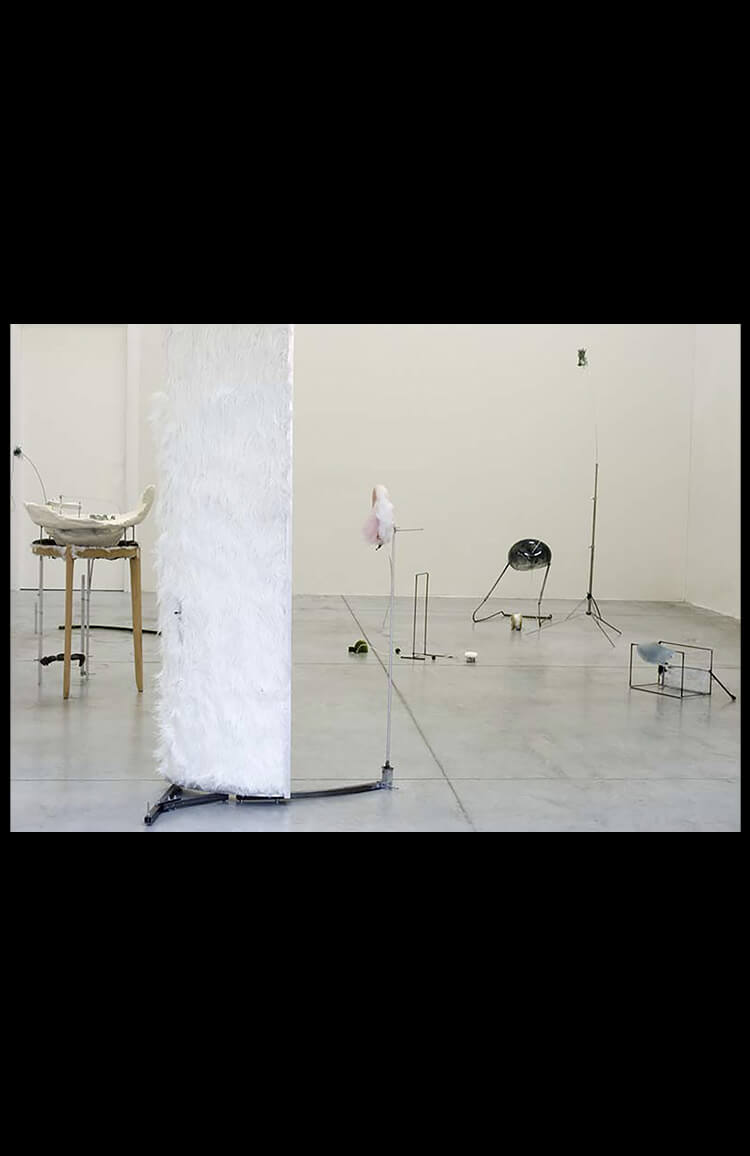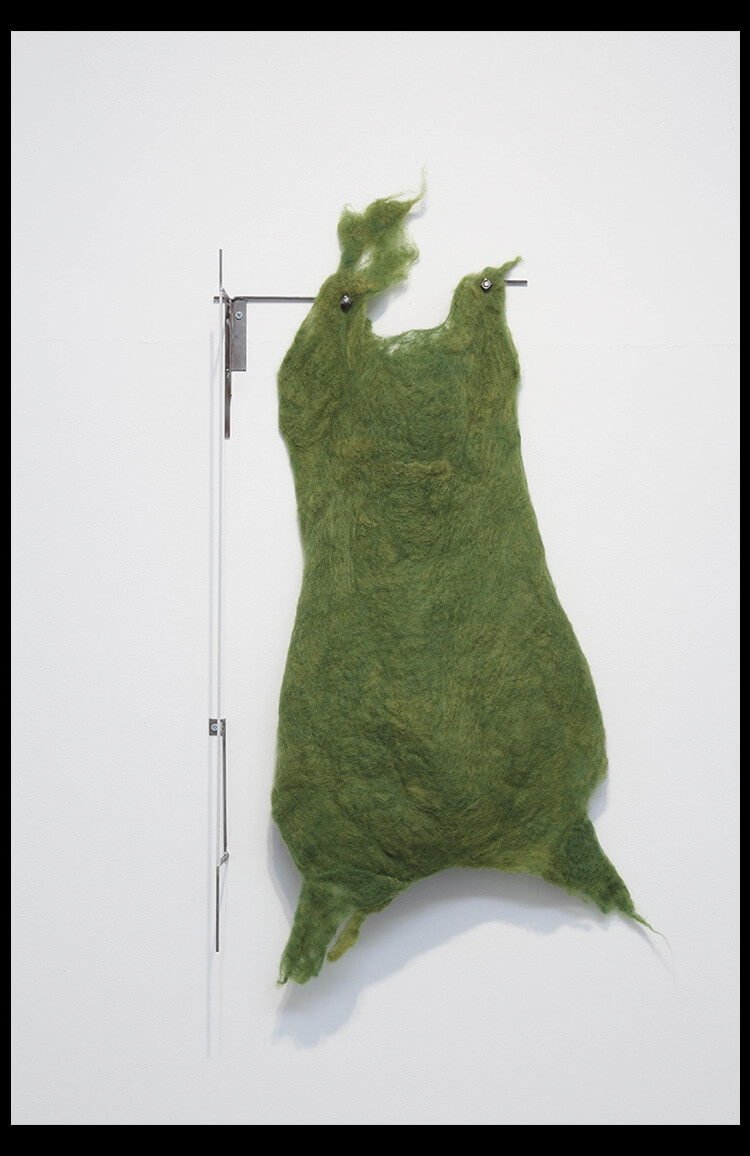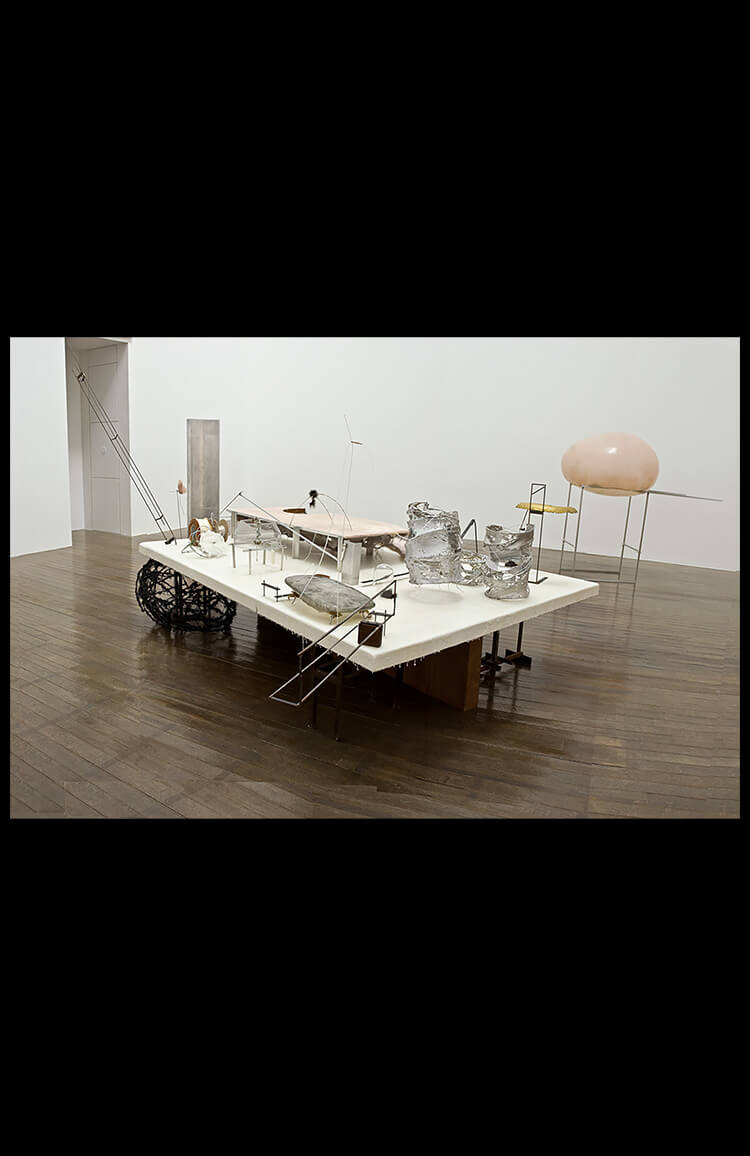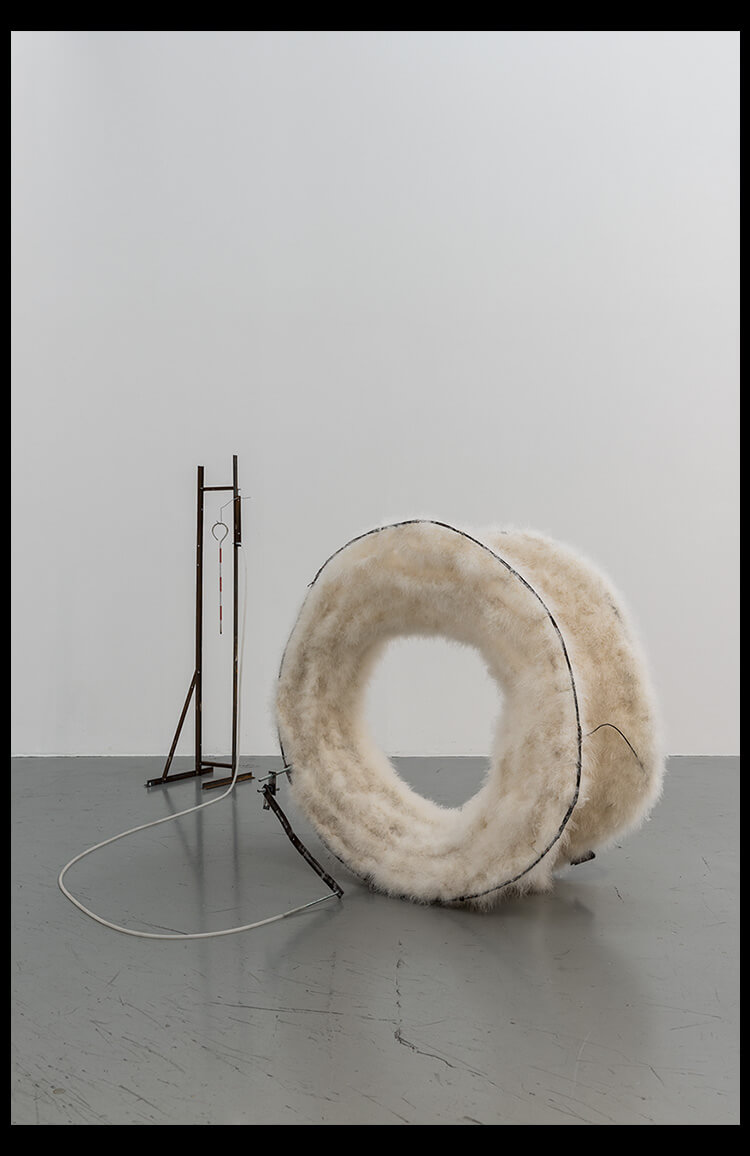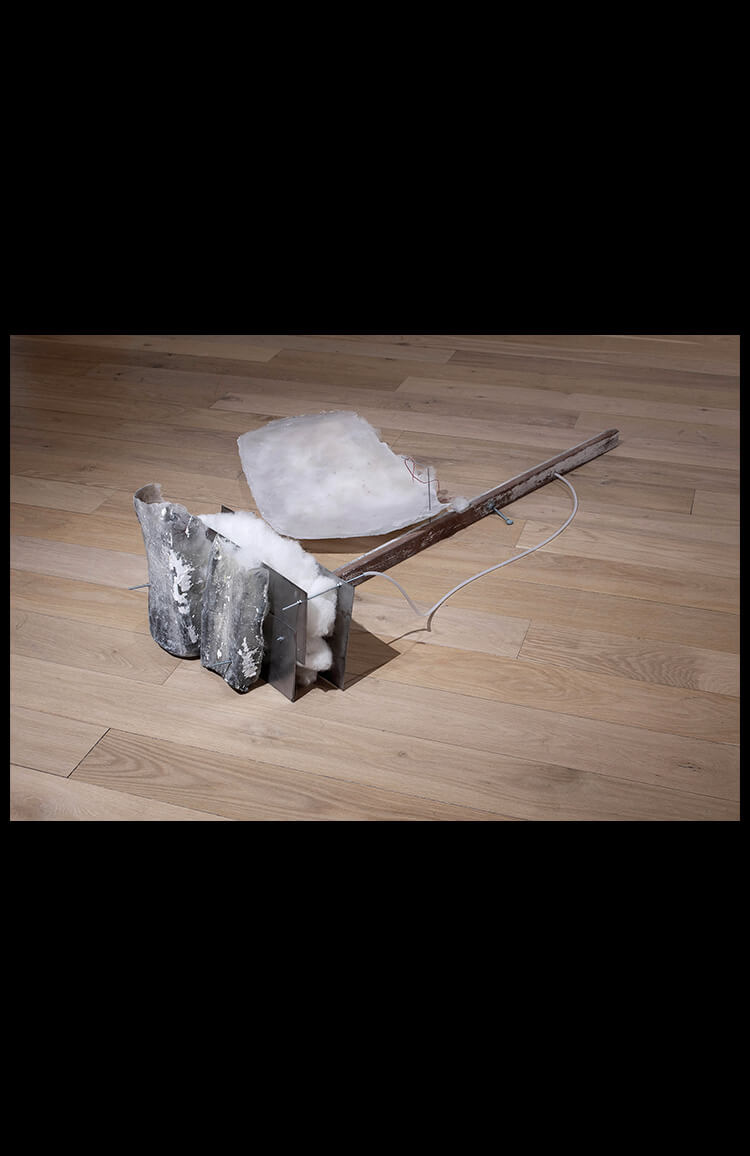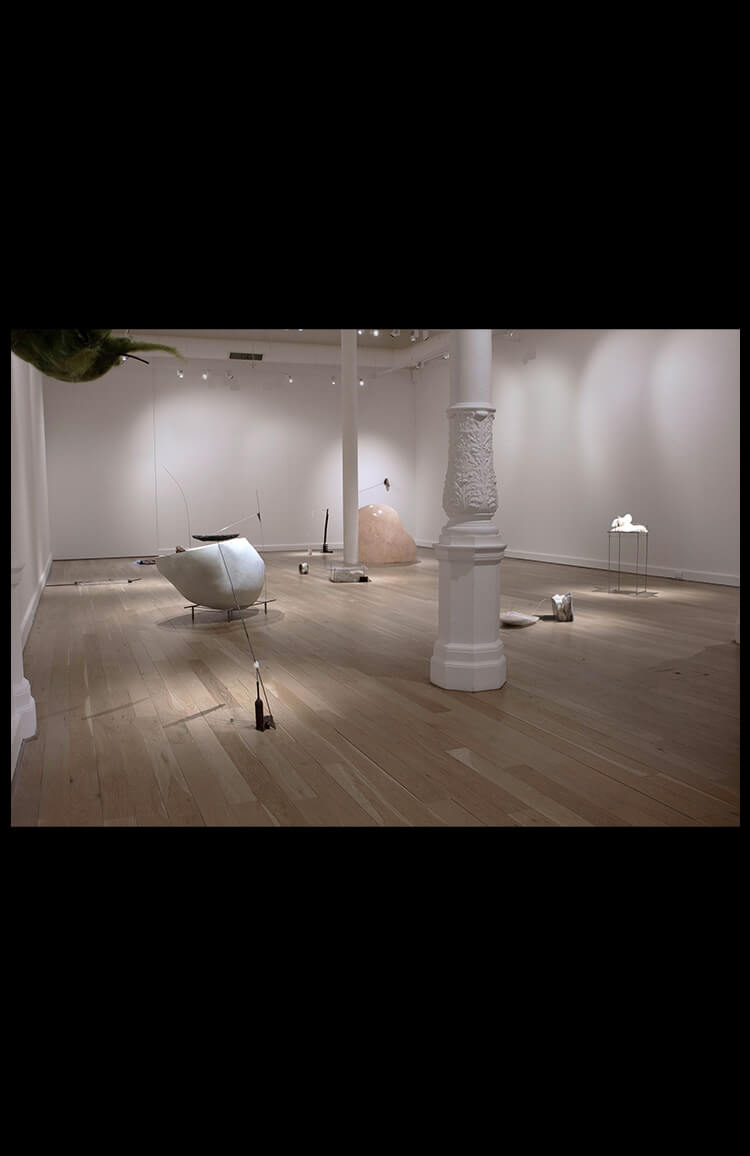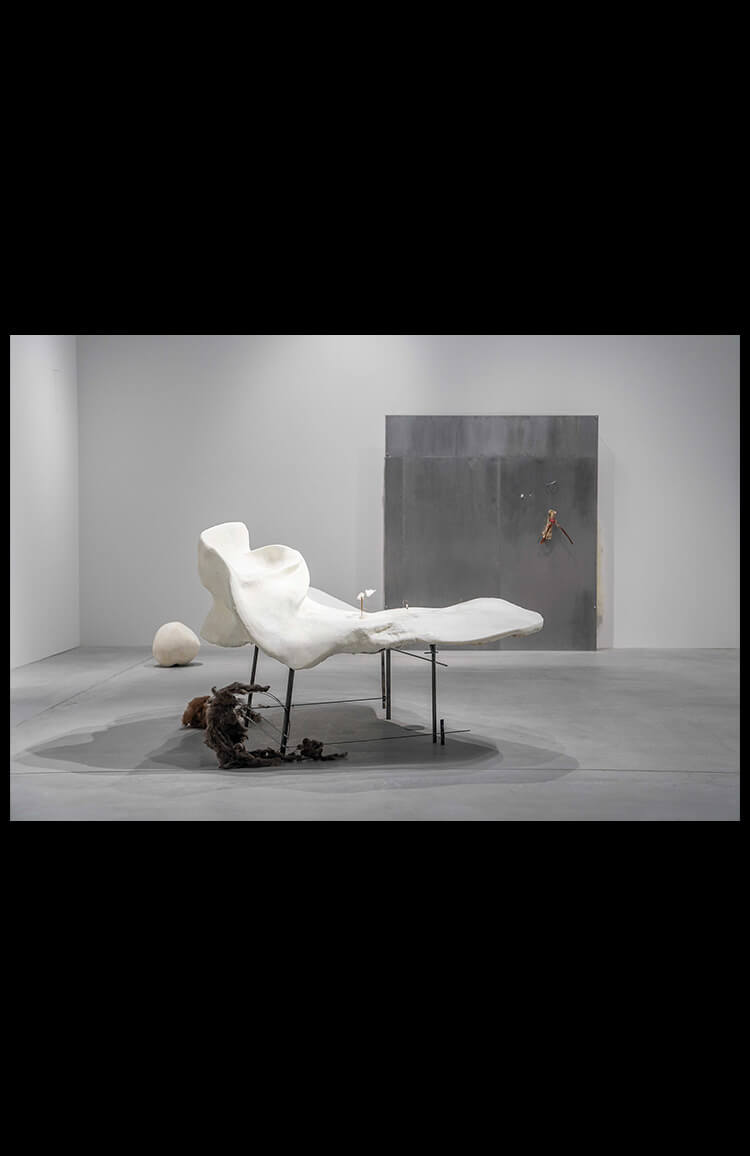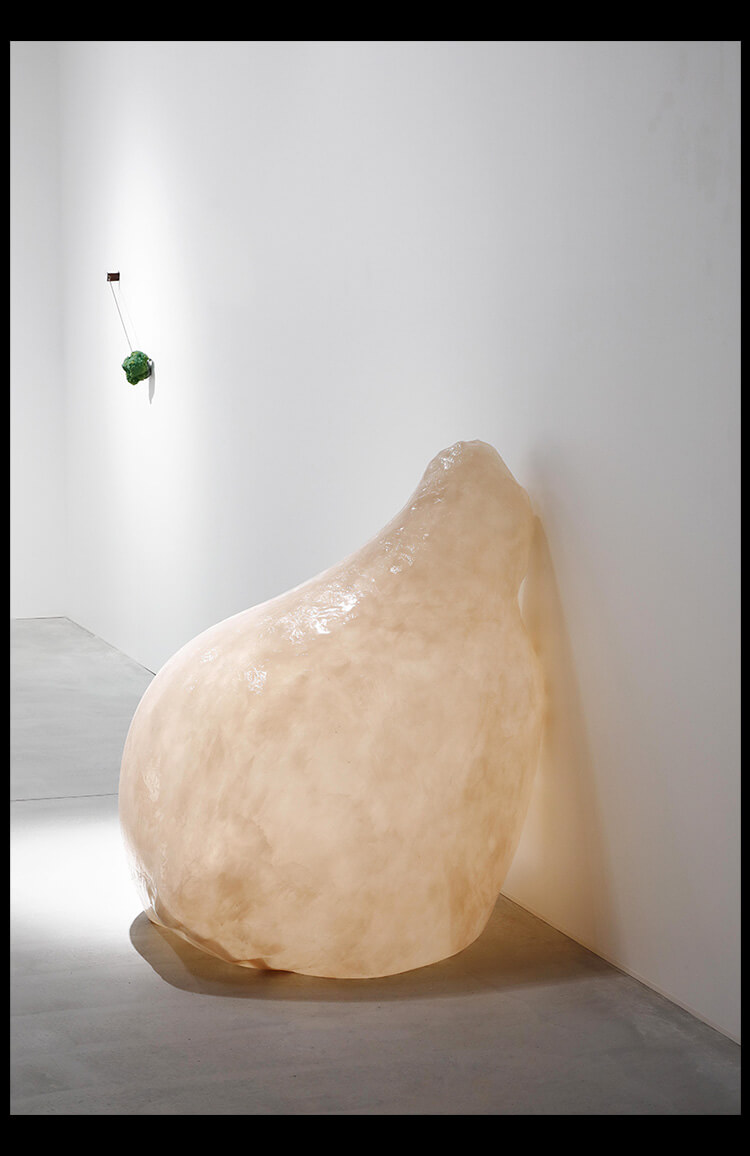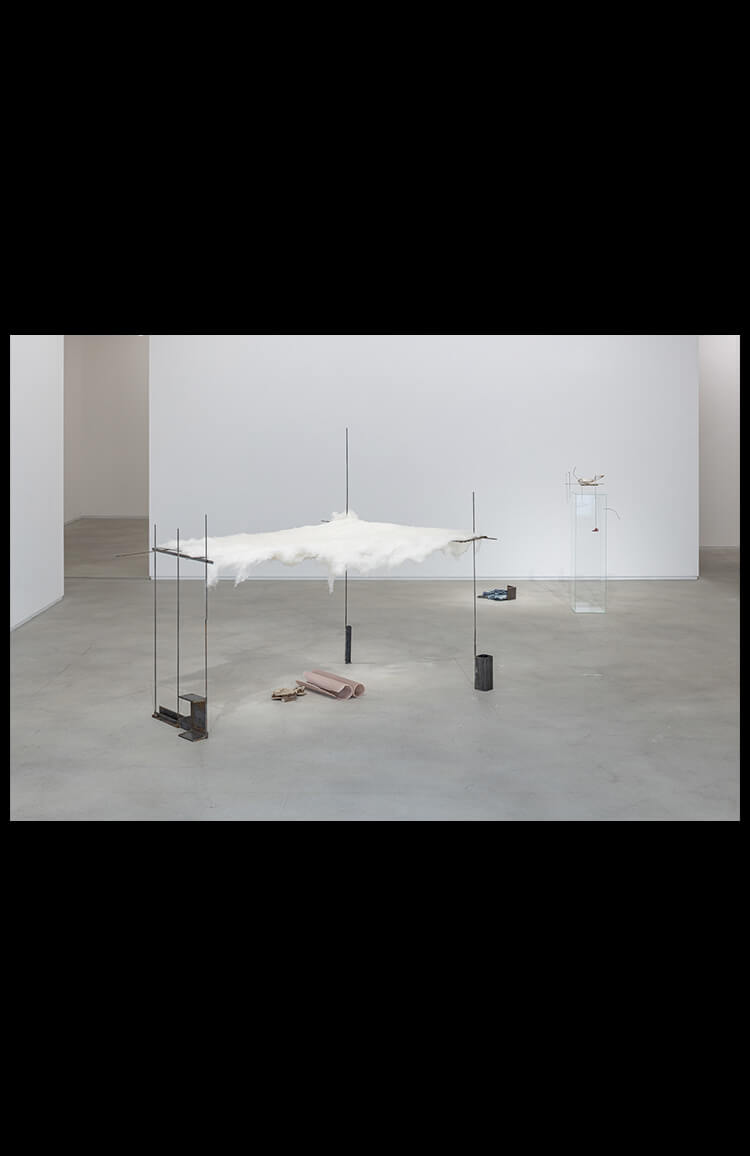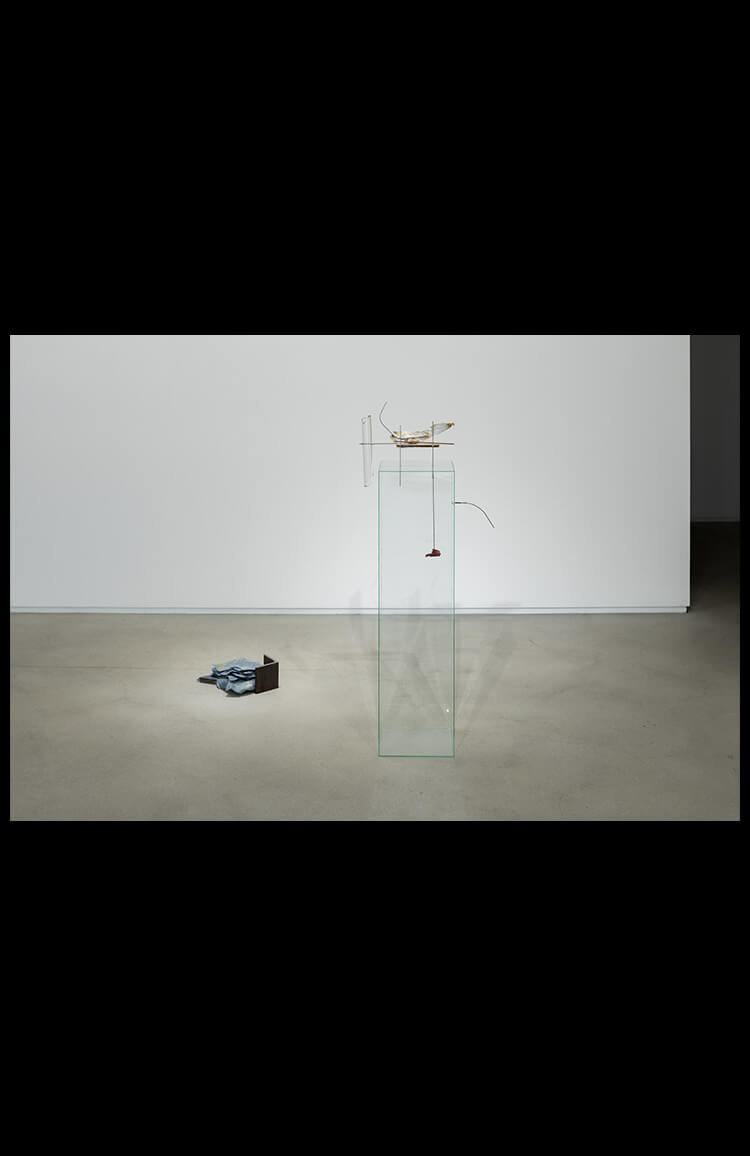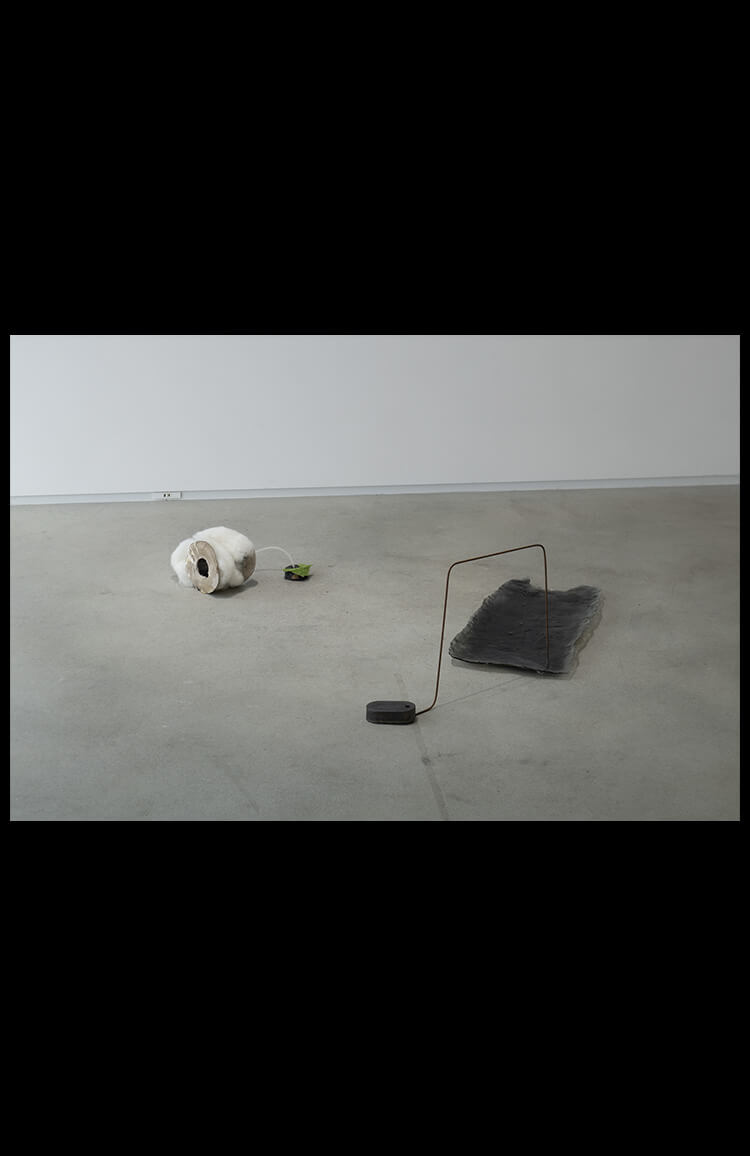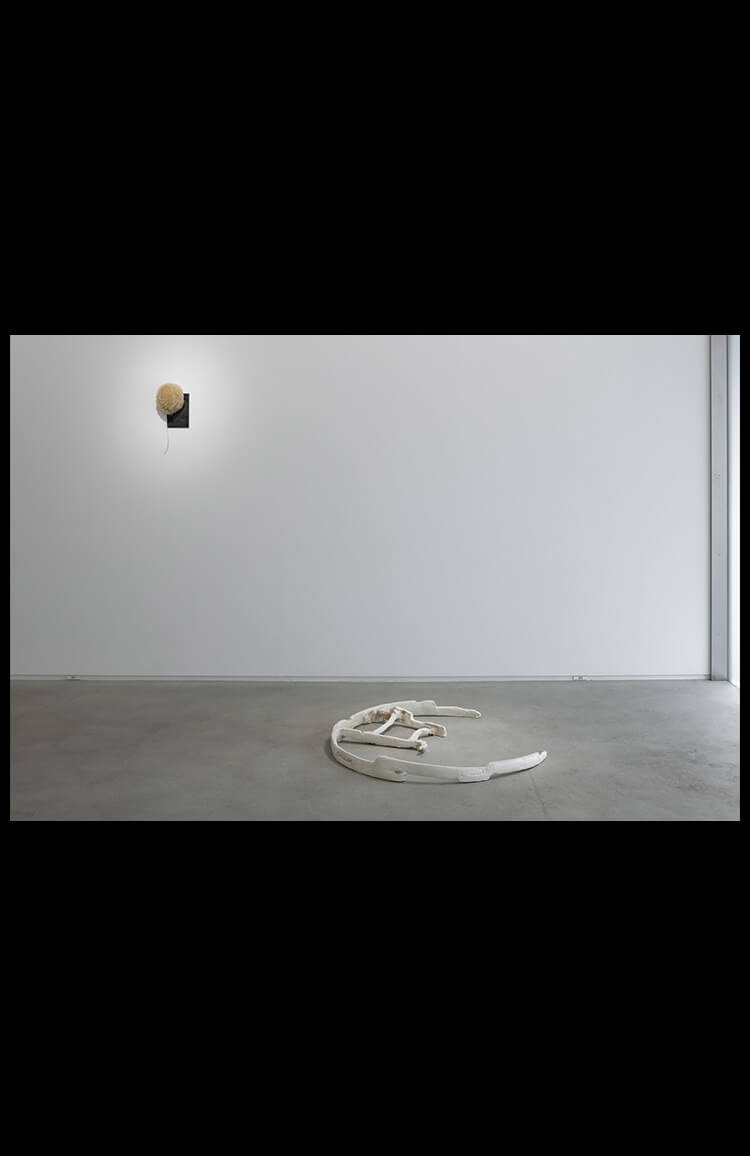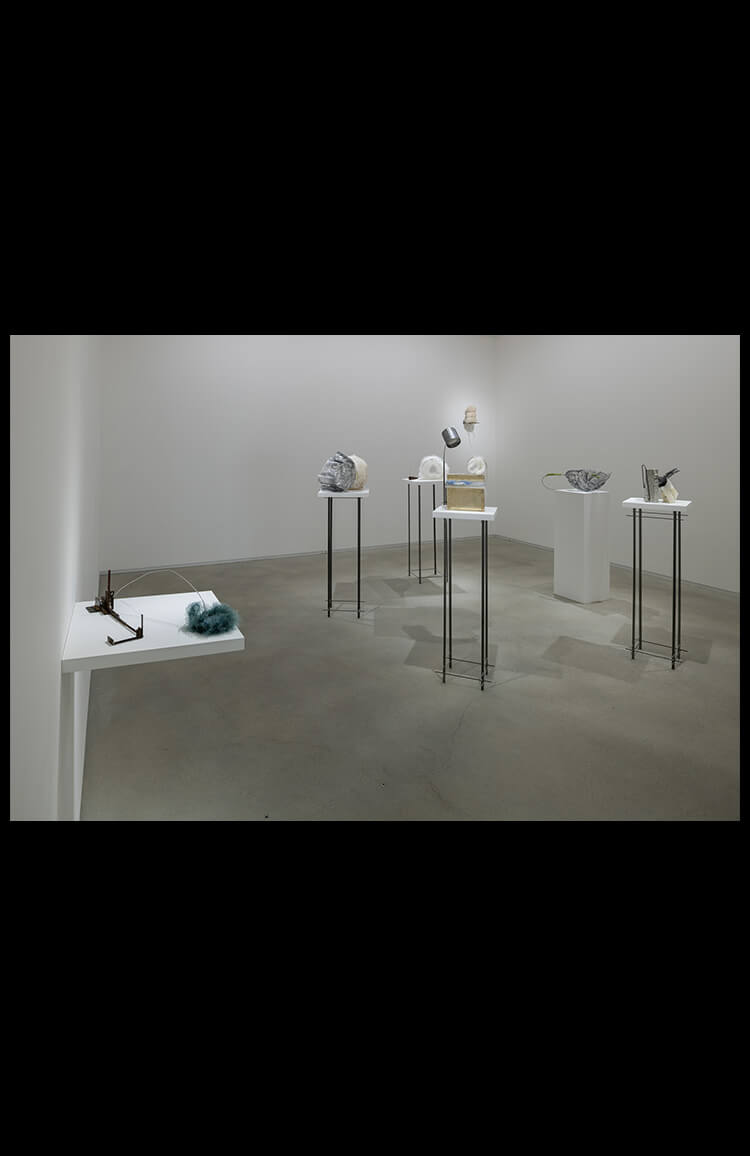IL__You also spent a lot of time in Italy, and I get the impression that Arte Povera somewhat influences your work.
NT__Yes? Well… I don’t know… Of course, I like it. But I haven’t studied it and am not particularly keen on it either. Moreover, I haven’t come across any Italians who have said the same thing as you.
IL__Do you think your work had some familiarity for people in Europe?
NT__I don’t know. My work was often described as exotic, mysterious, or strange…
IL__I would like to ask you about the materials of your work; have you always used the materials you use in today’s work since you were a student in London?
NT__I used to use more waste materials than I do now. Back in London, I could collect all kinds of nice discarded items, and I often found them even on the streets. So, I was sometimes refused to get the bus because of my lovely rubbish that I picked up on the street. I even had an incident where I fell head-first into a vendor’s bin out of excitement while looking for them. London was truly a Paradise of waste materials back then. *Laughs*
IL__Do you start work on production once you’ve collected all the materials?
NT__I collect materials daily, even if I’m not making work.
IL__Then you take the materials you’ve collected and put them together while thinking about what you will make.
NT__Not really. I don’t know what I’m going to make at the beginning, and I don’t know what I’m making until the end. If you know what you are making, you cannot go beyond what you already know, right?
IL__So you don’t decide what you will make…
NT__That’s right. I start without any clear ideas. I cut and attach or engage in any act with materials, like play. I continue the action until it seems like something. I collect and leave them, looking at them from afar. Sometimes, the fragments pull up buried memories and push me to imagine somewhere to go. But once I could recognise exactly what it is, I disassemble them back to the process to find other possibilities. I continue to assemble and operate them as an accumulation of decisions. These decisions are made by different ways of thinking: musical, logical, sensual, sensory, linguistic, and something I don’t understand.
Finally, as I reach the end, the fragments of the layers suggest something that I cannot fully recognise, but with a strong feeling of the existence of something, then, I stop. It must be like a hook, the hook for your depths… Possibly, I’m too ambitious. *Laughs*
Ho, I’ve forgotten to tell you. To finish, then, I get balance. “The balance” is just me pretending to be cool as a member of society. *Laughs*
IL__*Laughs*
NT__I don’t make, I’m looking for. If you make something, you can only make that thing, right? These limitations are incredibly restrictive for me, and it becomes almost impossible to surprise myself. Which is why I get bored during work. But let me whisper something to you; I am a bit scared every time I’m “Looking for”. Because I don’t know what will come, I don’t have a guarantee of completing my work. *Laughs*
IL__Can you tell us what you mean by balance?
NT__In the case of an exhibition, I often make the final touches in balance with the space. But it’s okay to break that balance. I sometimes like broken balance. Balancing is also about evoking the rhythm within and between works. I look for a balance that attracts people into my work.
IL__Do you adjust your pieces at the site?
NT__The impression is often different when you see it on site, and the work changes depending on how it fits in with the space. The same can also be said for my current solo exhibition; there are things I’ve torn down and made smaller.
IL__You mentioned “Cool Context” earlier; in which terms does your work relate to Language?
NT__Language is tricky. I break it down into fragments and treat it like any other material. Language is always with us, and it’s unnatural and hard to escape from it completely. I don’t incorporate Language into my work in the usual way. Because it claims sociability as a tool to connect with people. What I want to try is to take out something deeper inside myself, very personal or something isn’t being described. Language affects me like clothes; I’m not interested in fashion.
Either way, dismantling Language into pieces is automatic and unconscious in my process. Is that what happens when you adjust Language to the speed of sensory information? Well, it never really catches up. Language is roundabout and muddled, isn’t it?
IL__What else do you value in your production?
NT__Well, I guess… the feeling of the material in my hands, the weight and temperature, playing with the material before working on it. This is like dancing softly while wrapped in a material like wool. *Laughs*
IL__Like imagining that you are taking the material into your body?
NT__Well… like medium? NO! *Laughs*
Rather than taking them into my own body, I’m having a kind of conversation with them. Many things just pop into my head; it could be a forgotten emotion, an imagination gone somewhere, or a desire I’m not usually aware of. Something in my body works, not only my head. So playing with the material lets me draw myself out like a magnet. And when you combine or break the materials, it accelerates or stops, which is fun. It’s more fun than being with people. *Laughs*
IL__Are your criteria for collecting material also based on your own hook-like feeling?
NT__Do I have those criteria, or not? I wonder if there are materials I get on with or don’t. But often, objects I leave alone for ten years look wonderful afterward, and I often use objects I picked up somewhere 20 years ago. I never knew whether I would use these objects as materials at that point. I’ve collected different materials from different countries. Sometimes, the same material works differently if they come from other places.
IL__Do you always enjoy the production process?
NT__Yes, it is fun but takes up a lot of energy, too. When I’m in the final stages of my process, I’m shaping the pieces of the output scattered all over the studio and in my head—final development. Usually, most heavy lifting is done at that point, so I don’t use much physical energy, yet, I end up losing a lot of weight. I developed a liking for chocolate. I lost six kilos of weight during the preparation for my exhibition, Stay as a wave.

